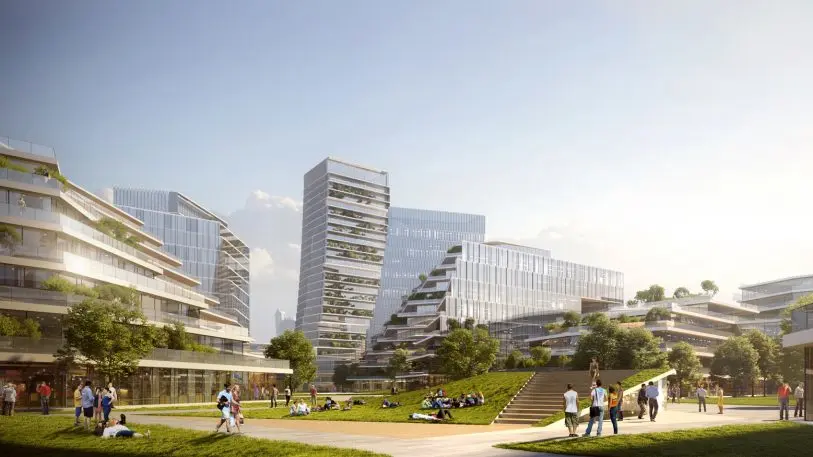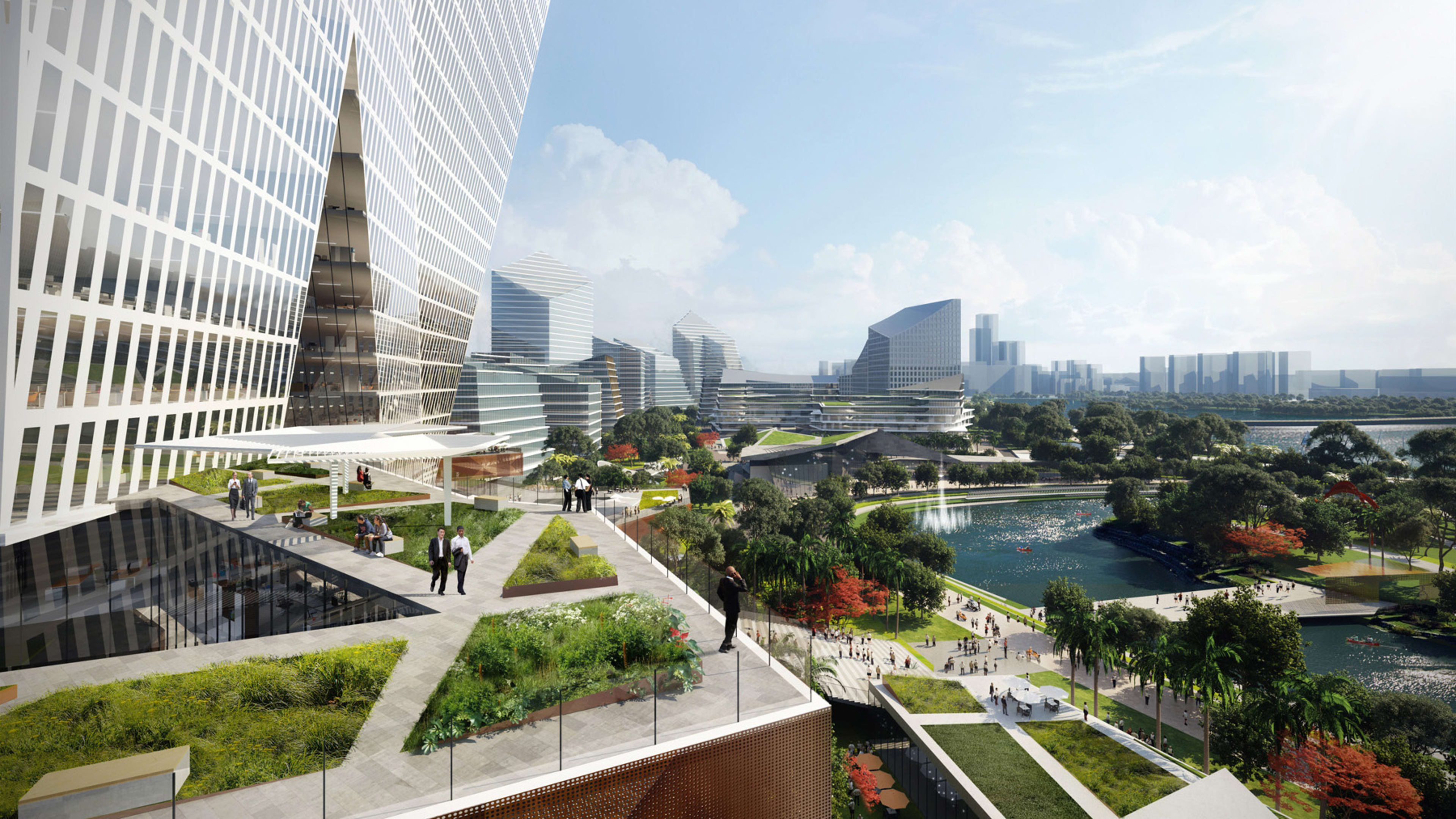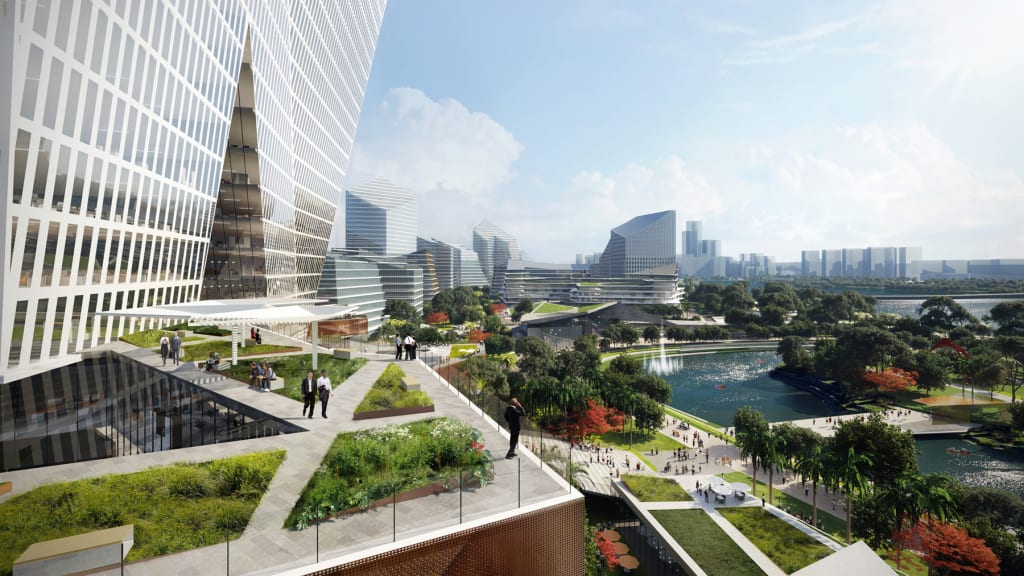A new neighborhood being built in Shenzhen, China—which will be roughly the size of midtown Manhattan—will only be barely accessible by cars. The district, called Net City, is designed for humans rather than traffic. The area, which will include new offices for Tencent, China’s largest internet company, along with housing, schools, retail spaces, and public parks, sits at the edge of Shenzhen, one of the most densely populated megacities in the world.
Like any typical modern city, Shenzhen is a place “where there’s more places you have to interact with traffic, more roads that you have to cross, and more pollution,” says Jonathan Ward, design partner at NBBJ, the firm that won a design competition to create the master plan for the district for Tencent, with construction slated to begin later this year or next year after other architects design specific buildings within the master plan. “And then, by default, there’s less green space in the really urban, dense parts of the city.”
In many cities, as much as half of the land area is devoted to streets and parking. In the new district, by contrast, most of the space is given over to parks, pedestrians, and cyclists, with the abundance of green space able to both give people access to nature and help absorb water during storms to prevent flooding. The basic concept, allowing only limited traffic, is a little like Barcelona’s superblocks. (In Barcelona, some nine-block grids are now closed off to traffic except for the outer road.)

Tencent wanted to create an area that drove innovation and a happier place to live and work. “The one thing that always limits that whole range of possibilities is the car,” he says. “And our cities are designed for cars, frankly, if you go back for the past three generations, that’s the driver, so to speak, of all designs of cities. We thought, look, we know we can’t remove it altogether. We’re just not there yet. But what if we can dramatically reduce it, and remove it where you might think you normally need to have it, but maybe you don’t?”

The design makes it easier to choose not to drive. Since it’s partly a corporate campus—including housing on-site for employees, and stores where they can shop—people can walk to work and run errands. If people come from other parts of the city to use the parks along the waterfront, they won’t have to drive; the area connects to the rest of Shenzhen by subway, buses, bike paths, and ferries.
It’s easier to deprioritize cars, of course, when you’re designing from scratch (and when you’re not building in a democracy). “We can step back and redesign the road geometry, and redesign that outside of the normal code restrictions,” Ward says. The team worked with local authorities to find new ways to still allow needed emergency access but otherwise discouraged or eliminated driving. But even car-centric neighborhoods in other cities are moving in the same direction. Los Angeles plans to get hundreds of thousands of people out of cars over the next decade. In Europe, multiple cities are creating car-free zones or dramatically reducing traffic through strategies like eliminating street parking.
Even a few years ago, Ward says, even progressive clients might not have considered the design that NBBJ proposed. That’s changed. “I think there’s more of an awareness that car culture and car infrastructure is one of our big climate control challenges,” he says. “I also think that the younger generation sees it as a limiter to a more vibrant city. So there’s a lot of awareness and awakening happening, and that then puts pressure on organizations, from the bottom up, to make change. . . . At the top, that becomes a broader awareness of the issues of climate and carbon in the atmosphere, and all the things we have to deal with to try to slow down the rise of temperature.”
Recognize your brand’s excellence by applying to this year’s Brands That Matter Awards before the early-rate deadline, May 3.





